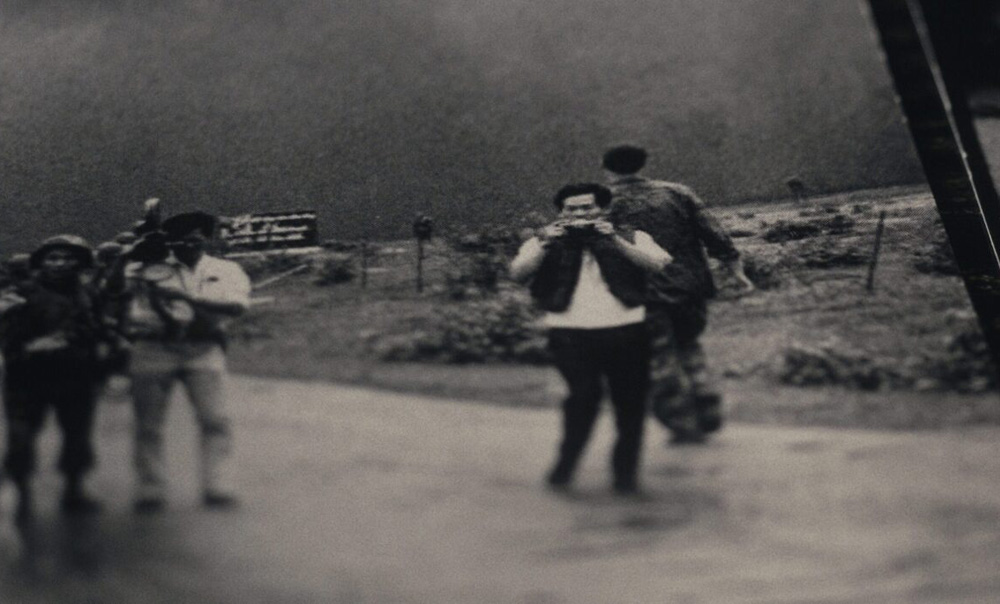There’s an unusually Western question driving “The Stringer,” Bao Nguyen’s compelling mystery that’s a bit of a Trojan horse as the British photojournalist Gary Knight begins to look into claims that Nick Ut, the photographer credited with one of the most famous images from the Vietnam War, of a girl stripped of her clothes to prevent burning from napalm, wasn’t actually the one responsible for taking the picture. It likely won’t matter to most who specifically took the photo outside of those immediately involved, only that it was taken at all, becoming a key piece of evidence that the war was a failure and changing public perception in a flash as the photo made the rounds on the Associated Press wire around the world.
Still, Knight and by extension Nguyen aren’t on a fool’s errand as they attempt to pin down what exactly happened on June 8, 1972 in Trang Bang, going so far as to enlist a team from France to virtually recreate where exactly everyone was standing in the village where the photo was taken based on all the photos and film footage that was available from that day. It may seem like an overly excessive effort to catch Ut in a lie, having built a career off the back of the picture for which he won a Pulitzer Prize when he was 20 and told the story countless times publicly of how he spotted the girl. (The AP has strenuously maintained it was his photograph.) But “The Stringer” gradually starts to raise bigger and more important questions as it begins to look at the circumstances around the photo that led to it being so powerful, from the composition of it to its publication.
“The Stringer” ultimately makes a convincing case that someone other than Ut took the picture, but its more powerful conclusion is highlighting the host of Vietnamese media that generally weren’t acknowledged in their coverage of the war or their skill in doing so. It remains an issue now as it was then for the filmmakers that Western media had a greater reach than the indigenous community when many of the people that Knight can talk to aren’t of Vietnamese descent, honing in on the South Asia AP office run by Horst Faas, a gregarious German, that processed the photo. When Carl Robinson, a photo editor from America at the time and one of the biggest advocates for a reconsideration of the credit for the “Napalm Girl” photo, can be heard saying, “In the Vietnamese way, I thought Ut should’ve been a lot more humble,” it can seem like the same ugly attitudes about Asians that drove the war itself are driving the present-day investigation, no matter how valid and well-intended it is.
However, Knight is ultimately led to others that were on the ground and in the van that day with Ut, who no matter what the findings of the film are was snapping photos, if not necessarily from the specific angle that made the picture that won the Pulitzer so resonant, and Nguyen is able to broaden the focus to all the local support staff that made the broadcast of images from the wartorn country possible beyond the Vietnamese photographers who instinctually could take the most striking pictures. Intriguingly, “The Stringer” reveals another kind of image consciousness when uncovering the steps that led to Ut being credited with the photo in the first place, a frenzy around breaking news that might’ve allowed Faas to handpick a photographer that could’ve better burnished a sense of legitimacy around the photo by virtue of his name rather than take the time to learn who took it specifically.
Yet “The Stringer” is at its best when it is less concerned with the photo’s provenance than its ripple effect, both as work capable of helping to end a war and the consequences its had on those denied a connection to it all these years. After previously directing the “We Are the World” doc “The Greatest Night in Pop” and the Bruce Lee biography “Be Water,” Nguyen has a clear understanding of legacy, but it’s fascinating to see the opposite effect it can have on those who were never recognized in the first place and the film provocatively finds that making history can have a number of different meanings.
“The Stringer” will screen at the Sundance Film Festival on January 26th at 2:30 pm at the Megaplex Redstone, January 27th at 9 pm at the Broadway Centre Cinemas in Salt Lake City, January 30th at 2:45 pm at the Library Center Theatre, February 2nd at 10:30 am at the Holiday Village Cinemas.




